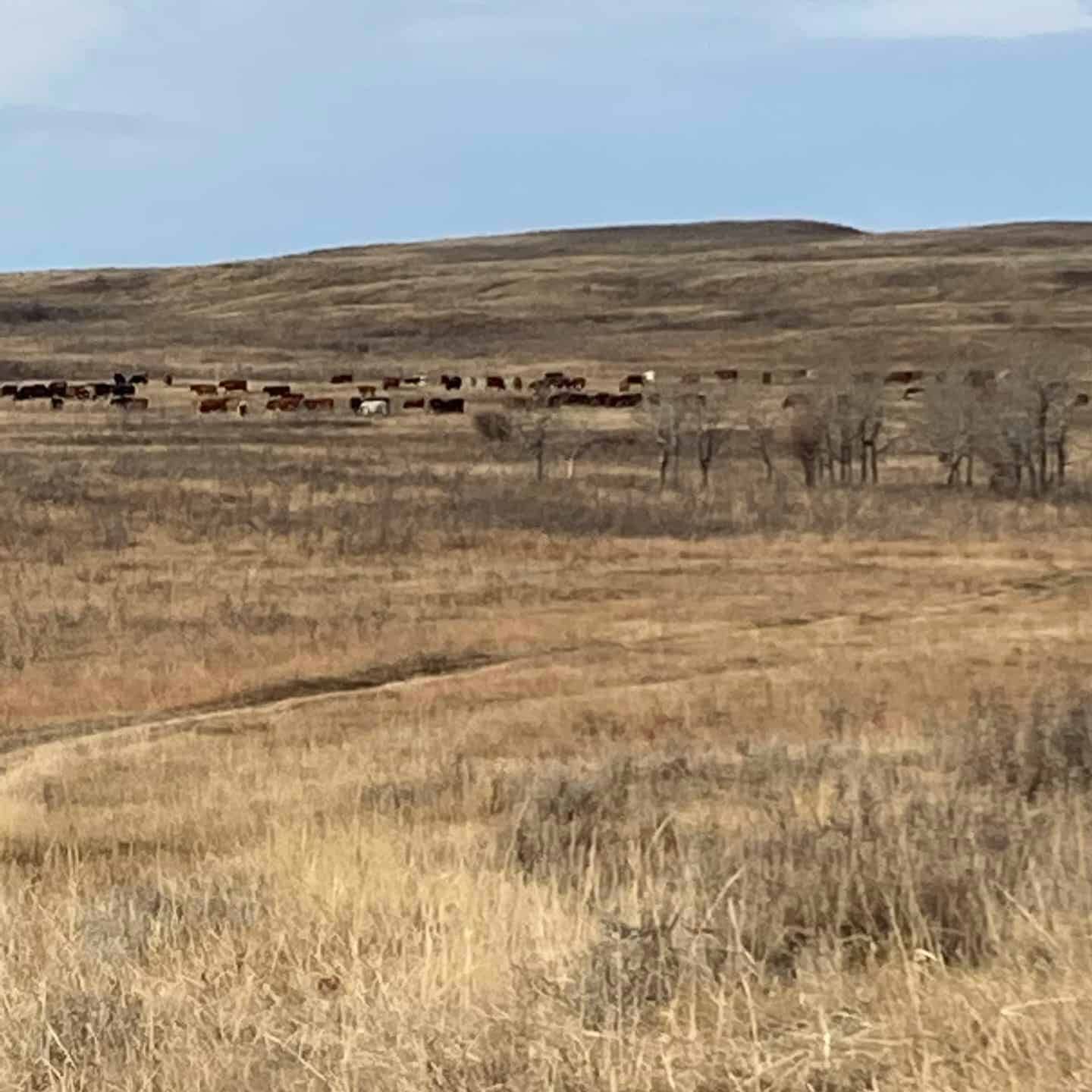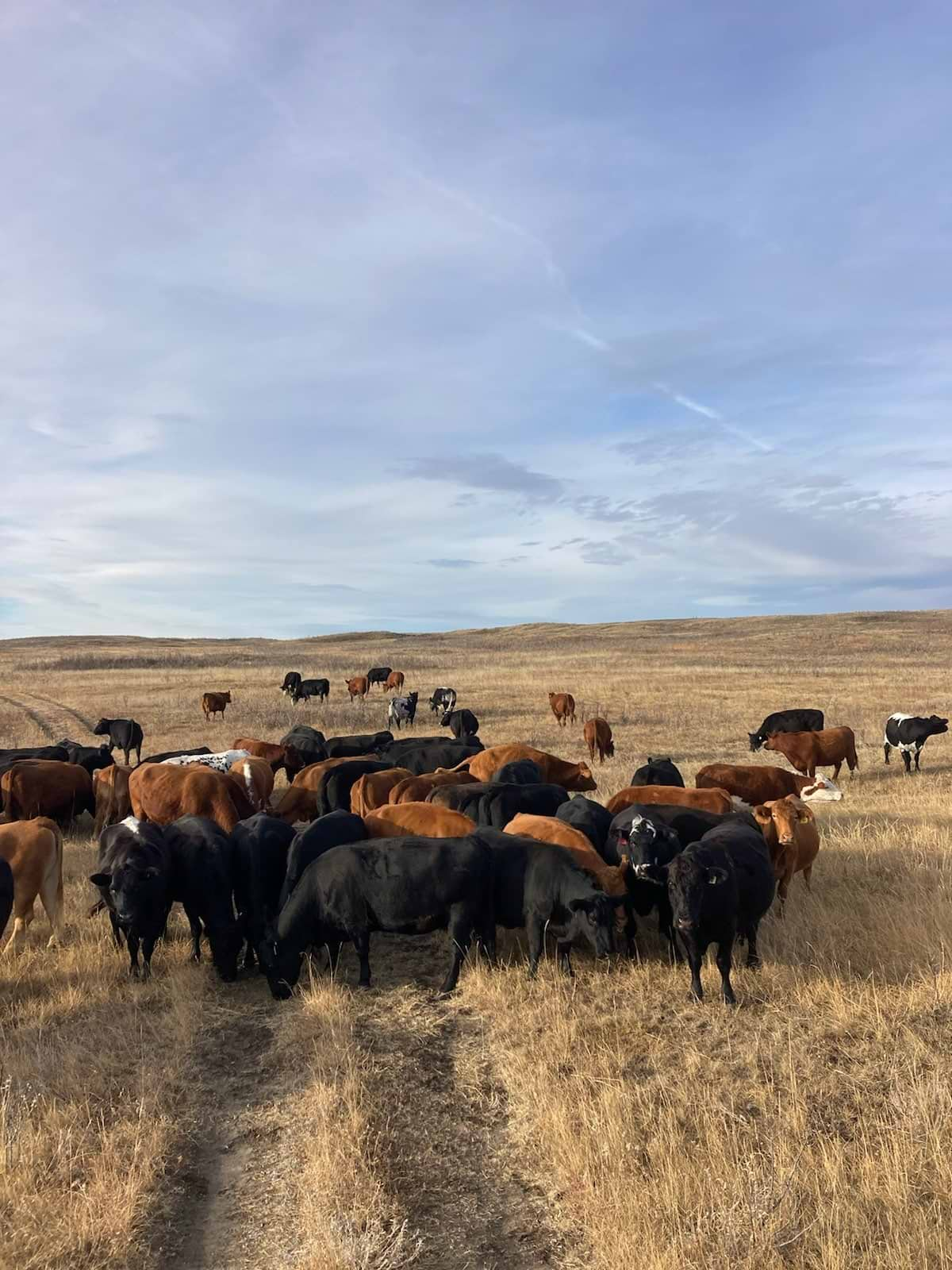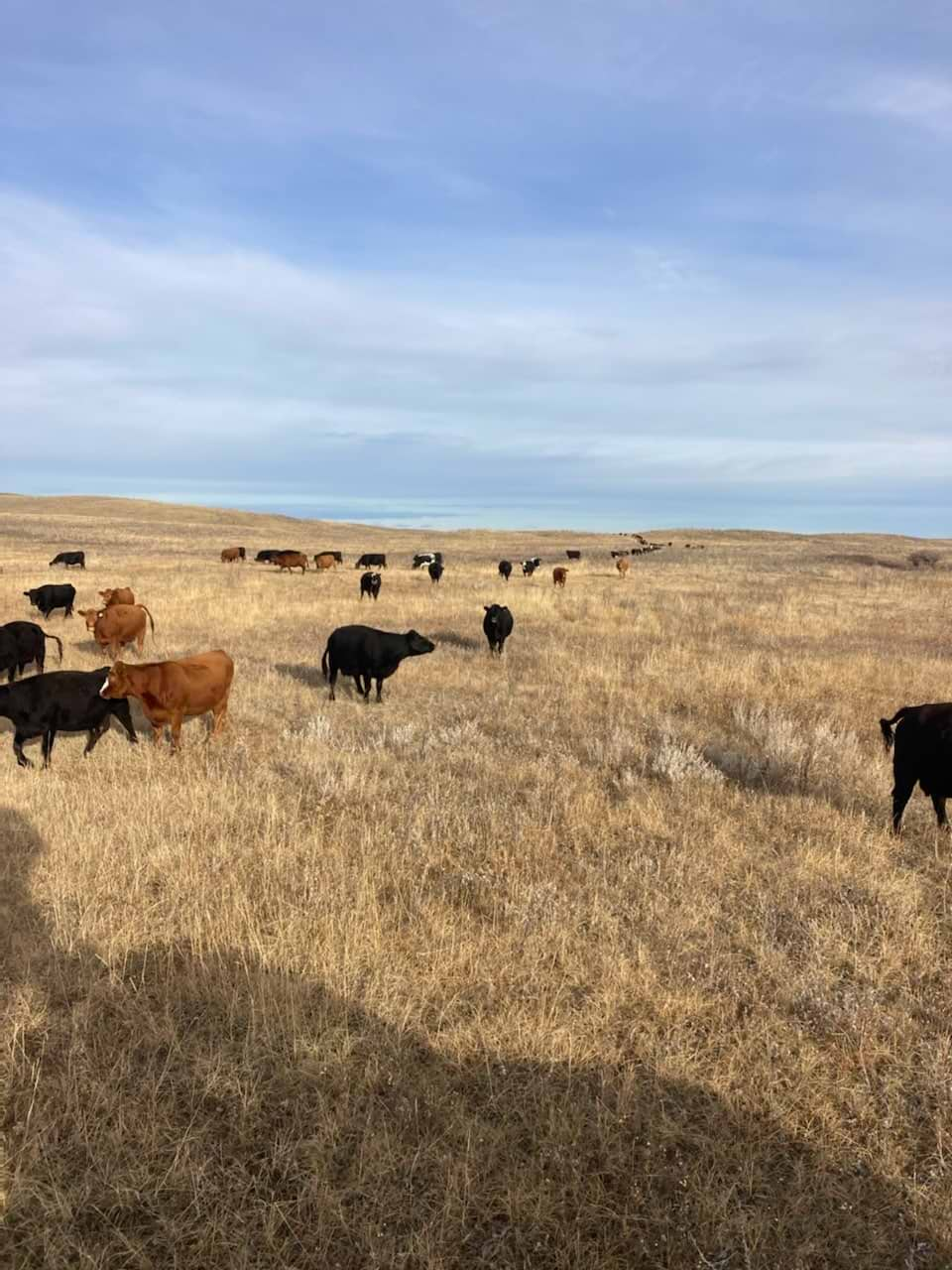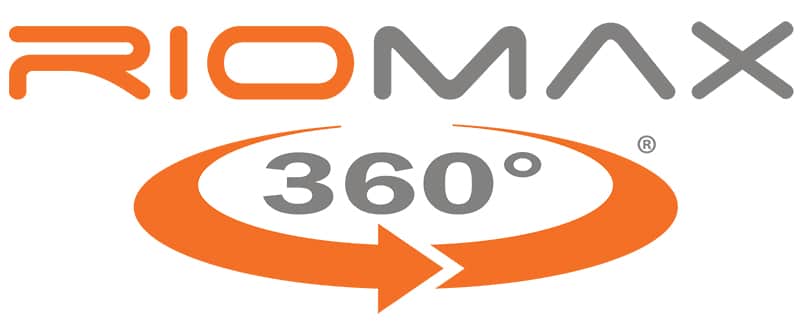Three Tringle Ranch: Keeping the Ranching Ethic Alive
Adding Riomax to the mix keeps cattle and calves healthy
Ralph Stock
Three Triangle Ranch

Gull Lake, Saskatchewan
Ask Ralph Stock for his definition of a good rancher and he sums his thoughts succinctly. “A good rancher is someone who cares as much for their cattle and their horses as they do their family.”
Think of the cattle like a factory. “If your factory is no good, your product is going to be no good,” says the manager of the Three Triangle Ranch near Webb, Saskatchewan. “If you don’t look after your cattle, whatever you’re producing isn’t going to be as good as it can be.”
And when you’re ranching in the sand hills of southern Saskatchewan, fulfilling that expectation isn’t easy. It’s hot in the summer, cold in the winter, and the wind blows. A lot. That means taking care of cows, especially during the winter’s cold and wind, requires the best.
But that doesn’t mean Stock babies the cattle. “We don’t winter them anywhere close to corrals so we can’t be babying,” he says. Their winter pastures have plenty of trees, however, and he feeds hay and pellets comprised of barley and pea and lentil screenings. He puts feed down on the lee side of the trees and after the cattle get their fill, all they have to do is walk to the trees to get out of the wind.
“What I give them a day depends on how cold it is,” he says. “If it’s 30° below C (-22° F) they’re probably going to get 30-35 pounds (of hay) a day plus 2-3 pounds of pellets. But if it warms up to -10° C, I’m going to cut them back 5 or 6 pounds.”
However, true to his definition of a good rancher, Stock and the ranch owner believe in giving their cows the best they can buy. “If you’re going to buy feed, buy the best feed you can because the freight’s the same.”
Common to quality
Stock came to the ranch in 2009 when the owner, a rancher and cattle feeder from Alberta, bought the place. “We started out with about 300 cows,” he says, adding that the cattle on the ranch when the owner bought it were “pretty common cows.”
They started upgrading the quality of the cow herd, buying 100 bred heifers a year beginning the first year. “We were at 800 last year (2021), but we really had to cull hard. It’s just so dry.”
In fact, it’s been dry for several years, which has really hammered their pastures. Their country is half leased government land and half deeded land. The pastures are big, 3 to 5 sections, and sandy, with lots of brush and trees. However, the grass is good feed, primarily buffalo grass, blue grama, spear grass, and others. “We rotational graze a lot,” Stock says, which allows the pastures to recover.
While hide color isn’t the first priority when buying bred heifers, they do concentrate their genetics on the bull side of the equation. For much of the time Stock has been managing the outfit, they used Salers bulls, both red and black. However, those bulls are getting harder to find, so they shifted to horned Hereford bulls, “trying to get a little more hair on them.” Currently, their herd genetics are about half Hereford, a quarter Angus, and a quarter Salers.

Riomax® to the rescue
Leaning on their philosophy of buying the best for their cattle, Stock and his boss were quick to add Riomax® to the operation. When Stock first came on as manager, sick calves were a real problem, as were cows that didn’t clean properly. As they were upgrading the quality of the cow herd, they learned of Riomax® and the benefits the orange tubs could bring to a ranch.
They tried a few tons and that’s all it took. Initially, out of 400 head, 300 of which were the cows that came with the place, Stock had 10 or 12 that didn’t clean, “which is really high for that amount of numbers,” he says. “I calved out 800 (in 2021) and I don’t think I had more than three that didn’t clean right away.” Two of those had twins, he added, “So all bets are off when they have twins on how good that works.”
Additionally, he went from treating 20 to 30 calves in the spring to treating one. “And the only difference is the tubs. Their milk is stronger, the cows get what they need, and one thing goes to another.”
Calving season begins about April 10 and since the bulls are turned out for only two cycles, calves are on the ground by around the middle of June. “The sickness in the calves, once we started using the tubs, I think was a pretty big, obvious difference.”

The proof’s in the pudding
In the case of droughted-out pastures, one thing going to another means the cows and calves still perform. Stock keeps Riomax® in front of the cows all year and, as he says, “The proof’s in the pudding.” The cows get more out of the grass when they’re on the tubs, he says. “They’re digesting more of what they’re getting, even if it isn’t top quality grass because it’s dry.”
The “pudding” for the Three Triangle Ranch is the condition of the cows and calves when they came off summer pasture. “The calves came off looking good,” he says. He weaned early in 2022 to give the cows a break. They regained condition quickly and were looking good heading into winter, he says.
Beyond that, he says the tubs are an advantage when it does rain. Prior to going with Riomax®, they were using a dry mineral and if it got rained on, it was ruined. “You end up taking a hammer and busting it all up and throwing it out because they won’t eat it once it gets rained on. This stuff (Riomax®) can get rained on and they slurp it out of the tub and don’t waste anything,” he says.
Following up on his philosophy of what it means to be a good beef producer, Stock believes if cattle don’t mean anything to you other than a way to make money, you’re an investor, not a rancher. “If I know they’re not comfortable, well, how am I going to be comfortable sitting in my warm house when it’s cold and windy?”
It’s that ethic that has long been the standard for ranchers. It’s that ethic that means you take care of your cattle when it’s several notches below zero in the winter and when the sun scorches the land in the summer.
And it’s that ethic that brought Stock and his boss to Riomax®. “I think it’s a really good product,” Stock says. “It’s definitely an investment because it’s not cheap. But I think you definitely get your money back.”



